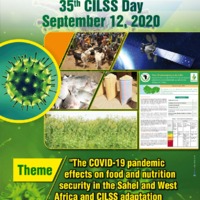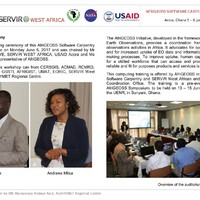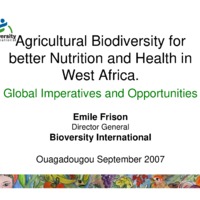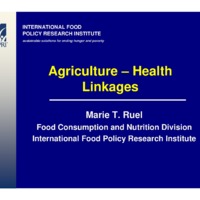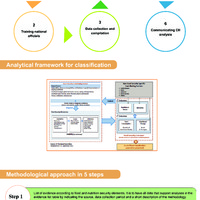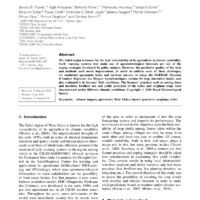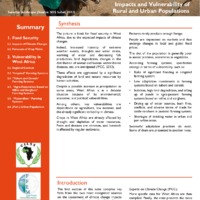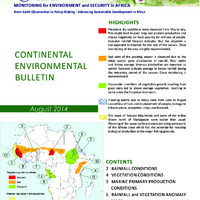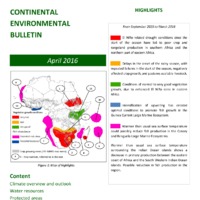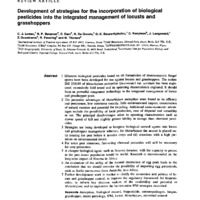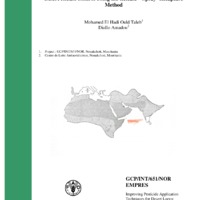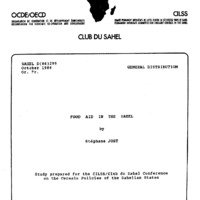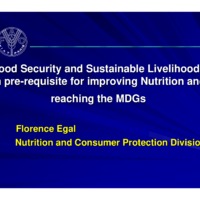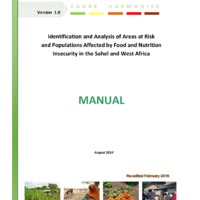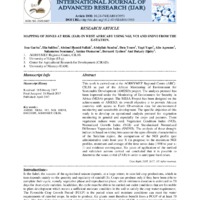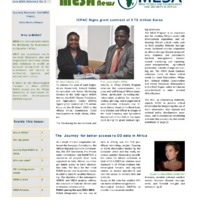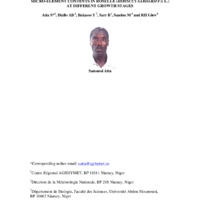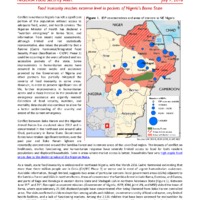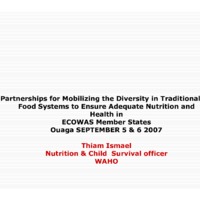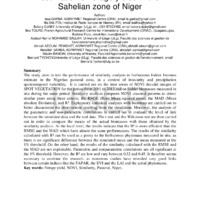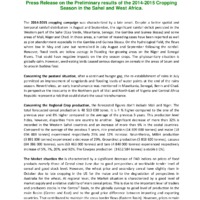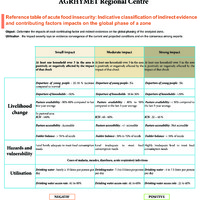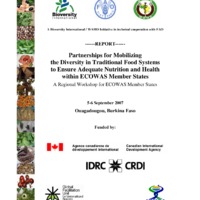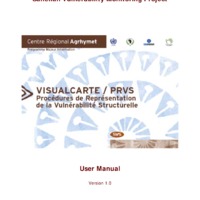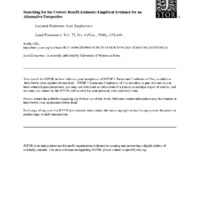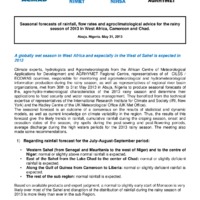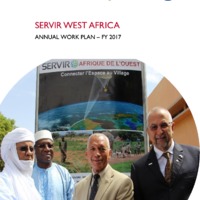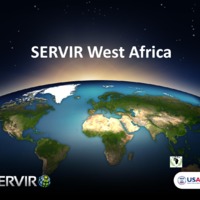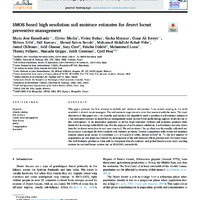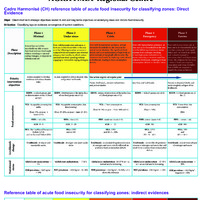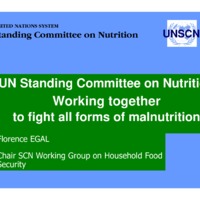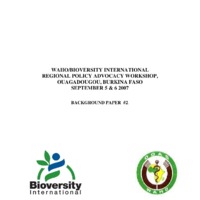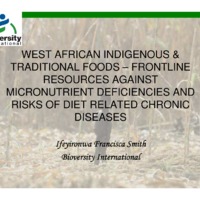Recherche
36 items
35th CILSS Day September 12, 2020
"The COVID-19 pandemic effects on food and nutrition security in the sahel and west Africa and CILSS adaptation efforts for information production"
Characterizing and modeling the diversity of cropping situations under climatic constraints in west africa
The Sahel region is known for the high vulnerability of its agriculture to climate variability. Early warning systems that make use of agrometerological forecasts are one of the coping strategies developed by policy makers. However, the predictive quality of the tools and methods used needs improvement. In order to address some of these challenges, we conducted agronomic trials and on-farm surveys to adapt the SARRAH (Syst`eme d’Analyse R´egionale des Risques Agroclimatiques, version H) crop simulation model, and also evaluated it in farmers’ field conditions. The farmers’ practices such as sowing dates and densities, fertilizer use and yields potentials of the millet and sorghum crops were characterized under different climatic conditions.
Climate changes and food security impacts and vulnerability of rural and urban populations
The picture is bleak for food security in West Africa, due to the expected impacts of climate changes. Indeed, increased intensity of extreme weather events, droughts and water stress, warming of water and decreasing fish production, land degradation, changes in the distribution of animal and human vector-borne diseases, etc. are anticipated (IPCC, 2013). These effects are aggravated by a significant degradation of land and natural resources by human activities. Despite a possible increase in precipitation in some areas, West Africa is in a delicate situation because of its environmental, economic, and political vulnerabilities. Among others, key vulnerabilities are dependence on agriculture, low incomes, and the already significant variability in climate. Crops in West Africa are already affected by drought and depletion of water resources. Pests and diseases are common, and livestock is affected by regular outbreaks. Pastures rarely produce enough forage. People are dependent on markets and thus undergo changes in local and global food prices. The diet of the population is generally poor in animal proteins, sometimes in vegetables. According farming systems, specificities emerge in terms of vulnerability, such as: • Risks of significant flooding in irrigated farming system; • Low adaptation investments in farming systems based on tubers and cereals; • Isolation, high land degradation, and silting up of ponds in agro-pastoral farming systems based on millet and sorghum; • Drying up of water sources, bush fires, conflicts, and adverse terms of trade for cattle ranchers in pastoral farming system; • Shortages of drinking water in urban and peri-urban areas. Successful adaptation practices do exist. Some of them are presented in another note
Continental environmental bulletin aug 2014 en
Persistent dry conditions were observed from May to July. This might lead to poor crop and pastoral production and impact negatively on food security for millions of people. Seasonal rainfall forecast indicates that the situation is not expected to improve for the rest of the season. Close monitoring of the area is highly recommended. • Bad start of the growing season is observed due to the delay and/or poor distribution of rainfall. Poor yields and below average biomass production are expected as rainfall forecasts indicate average to below rainfall during the remaining period of the season. Close monitoring is recommended. • Favourable conditions of vegetation growth resulting from good rains led to above average vegetation, reaching in some areas the historical maximum.
Continental environmental bulletin. mesa
El Niño related drought conditions since the start of the season have led to poor crop and rangeland production in southern Africa and the northern part of eastern Africa. Delays in the onset of the rainy season, with repeated failures in the start of the season, negatively affected crop growth, and pastures available livestock. Conditions of normal to very good vegetation growth, due to enhanced El Niño rains in eastern Africa. Intensification of upwelling has created optimal conditions to promote fish growth in the Guinea Current Large Marine Ecosystem. Warmer than usual sea surface temperature could possibly reduce fish production in the Canary and Benguela Large Marine Ecosystems.
Forum 2024 2024 Forum on Seasonal Forecasts of Agro-hydro-climatic characteristics of the rainy season for Sudanian and Sahelian zones of West Africa (PRESASS, 2024)
A generally wet 2024 rainy season is expected over the Sahelian strip, with late to average onset dates in the Central Sahel and early to average in the Western and Eastern Sahel, late to average cessationdates, short dry spells at the beginning of the season in the Western Sahel and average to long dry spells in the Eastern Sahel and overall long towards the end of the season across the entire strip Sahelian region, and overall above-average flows in the main river basins of the Sahel.
Guide to integrating nutrition into nutrition-sensitive sectoral strategic documents in the Sahel West Africa
The stakeholders involved in the project to Improve Food and Nutrition Governance and Sustainable Agriculture in the Sahel and West Africa (PAGR-SANAD), notably ECOWAS, UEMOA, CILSS and CEI/PREGEC region through ROPPA, have been heavily involved in improving the food and nutrition situation for many years. On an institutional level, nutrition has been considered, following the accession of all the countries in the Sahel and West Africa region to the Scaling Up Nutrition (SUN) movement. Almost all the countries have revised their nutrition policies and strategies in line with the multi-sectoral approach. However, the issues of nutrition-sensitive sustainable food security remain a major challenge.
Identification and Analysis of Areas at Risk and Populations Affected by Food and Nutrition Insecurity in the Sahel and West Africa
Facing recurrent food and nutrition insecurity affecting Sahelian and West African populations, governments and their development partners have set up mechanisms to monitor food situation. However, these mechanisms do not use the same methodological approaches, which often lead to results that are difficult to compare and which at times are even contradictory. Aware of this situation and the need to find a suitable solution, CILSS member states and partners have initiated the development of a Cadre harmonisé d’identification et d’analyse des zones à risque et des populations en insécurité alimentaire et nutritionnelle au Sahel et en Afrique de l’Ouest (Harmonized Framework for Identification and Analysis of Areas at Risk of and Populations Affected by Food and Nutrition Insecurity in the Sahel and West Africa). This tool, known as “Cadre Harmonisé” (CH), is expected to serve as a framework for countries to assess food and nutrition insecurity on an objective and consensual basis. The purpose of the Cadre Harmonisé is to help countries prevent food crises better and, where appropriate, quickly identify affected populations and appropriate measures to improve their food and nutrition security. The related method has been developed by a group of food and nutrition security experts from CILSS, FAO, WFP, FEWS NET, AFD, IPC/GSU, JRC/EC and UNICEF, and from international NGOs Oxfam International, Save the Children and ACF1. It is worth recalling that starting from 2008, various meetings held by the CH Technical Committee agreed for the CH to include some elements of the Integrated Food Security Phase classification version 1 (IPC 1.0). The IPC is a set of tools and procedures for classifying food and nutrition insecurity severity for decision making. Since the development of a manual for IPC 2.0, discussions have been under way to bring the CH closer to the IPC to incorporate lessons learned that improve comparability of results from the two tools. Similar to the IPC, the Cadre Harmonisé seeks to make best use of a set of tools and procedures for classifying the nature and severity of current and projected food and nutrition insecurity situations on the basis of a consensual analytical framework and classification scale. The CH is based on the following four conceptual models commonly used by national, regional and global mechanisms: Risk = f (Hazard, Vulnerability) Sustainable Livelihoods Framework The UNICEF Nutrition Conceptual Framework The four dimensions of food security (availability, access, utilization, and stability) The CH therefore is an integrated analytical framework built on a technical consensus that seeks to make best use of data from all systems or methods, namely food consumption surveys, nutrition surveys, the Household Economy Approach (HEA) or other information provided by agricultural surveys and market monitoring. The CH assesses food and nutrition insecurity, based on convergence of evidence from several indicators. The CH uses a food insecurity severity scale with five phases. Such a severity scale, which is an international one, makes it possible to make comparisons between countries of the sub-region and also at global level. CILSS was mandated to develop and implement the CH as a common tool for Sahelian and West African countries. Its analysis cycles will from now on help develop regional mapping of current food and nutrition situations and analyze projected situations. 1 Other institutions such as MIFRAC, IBIMET and CARE International initially contributed to the development of the present analytical framework. Cadre Harmonisé MANUAL Version 1.0 Page | 13 The CH also seeks to strengthen the regional integration framework in the CILSS-ECOWAS-UEMOA region so that collaborative and harmonized analyses of food and nutrition situations are conducted through the best possible use of other tools and analysis methods developed by national mechanisms and partners. Given the importance of the process of harmonizing the analytical framework for food and nutrition situations in West Africa, it is necessary that all food and nutrition security stakeholders take ownership of it and make it their decision-making tool. Furthermore, efforts are needed to strengthen the partnership framework within countries and to support the operations of early warning systems in order to improve the collection of reliable data. CH implementation relies on existing data collection mechanisms. Efforts should be made by countries and partners to provide financial support to these mechanisms - as CH implementation will from now on be the baseline reference for activating regional food reserves and mobilizing technical and financial partners (TFPs).
Mapping of zones at risk in west Africa by using NGI, VCI and SNDVI from the E-Station.
This work is carried out at the AGRHYMET Regional Centre (ARC)-CILSS as part of the African Monitoring of Environment for Sustainable Development (AMESD) project. The analysis protocol has been improved under the Monitoring of Environment for Security in Africa (MESA) project. The MESA Project has been designed on the achievements of AMESD; its overall objective is to provide African countries with access to Earth Observation data for environmental monitoring and sustainable development. The specific objective of this study is to develop an operational analysis protocol for vegetation monitoring in general and especially for crops and pastures. Three vegetation indices were used: Vegetation Condition Index (VCI), Normalized Growth Index (NGI) and Standardized Normalized Difference Vegetation Index (SNDVI). The analysis of these drought indices is based on taking into account the agro-climatic characteristics of the Sahelian region, the comparison of the NGI profile (per administrative unit) from year X (in progress) to the maximum NGI profiles, minimum and average of the time series data (1998 to year x-1) and evidence convergence. Six years of application of the method and validation actions carried out concluded that it is possible to determine the zones at risk (ZAR) in order to anticipate food crises.
Mesa news june
To address the issue of Land Degradation Assessment, Natural Habitat Conservation and Forest Monitoring Services in the IGAD region (MESA theme), the IGAD Climate Predictions and Applications Centre (ICPAC) Signed grant contract of 2.75 million Euros on the 03 March 2014 at the African Union Commission (AUC) Headquarters in Addis Ababa, Ethiopia.
MICRO-ELEMENT CONTENTS IN ROSELLE (HIBISCUS SABDARIFFA L.) AT DIFFERENT GROWTH STAGES
In the western Sahel, leaves of Roselle (Hibiscus sabdariffa) have considerable economic importance because of their nutritional and medical uses. These plant organs are used to supplement nutrients provided by cereals such as millet and sorghum. However, there is a lack of information on the nutrient composition of these plant organs of Roselle at different growth stages. Therefore, the experiment was carried out under rainfall conditions during the 2006 rainy season (from July to September) at the experimental station of the Agrhymet Regional Centre in Niamey (Niger). The content of the micronutrients Fe, Mn, Cu and Zn in leaves of three ecotypes of Roselle (A3, A7 and A9) at three growth stages, vegetative (stage I), flowering (stage II), and mature (stage III) was determined. The experimental design was a randomized complete block with four replicates and one variable (ecotype). Results indicated that at stage I, ecotype A3 had higher Fe content in leaves. In addition, A3 had also the highest Zn content in leaves at stage I. For all three ecotypes, Fe and Zn content in the leaves decreased significantly (p<0.05) from stage I to stage II, then remained constant until stage III. For Fe, the decrease between stage I and II was 37& for A3 and 50&, respectively for A7 and A9. The corresponding decrease of Zn content was 30& for A7 and 50&, respectively, for A3 and A9. The Mn content in the leaves of Roselle was similar for the three ecotypes at stage I, thereafter increased continuously during plant growth. From stage I to II, the increase was about 90&, 70& and 50&, respectively for A9, A7 and A3. From stage II to III, the increase in Mn content in the leaves was significantly (p<0.05) higher for A3 and A7, respectively 180& and 80&. At stages I and II, the highest Cu content was recorded for A3 and the lowest one for A7. During the whole cycle of plant growth, the Cu content in the leaves was relatively constant for A9. In contrast, Cu content in the leaves decreased for the remaining ecotypes. Therefore the vegetative stage corresponding to 25 days after sowing is the recommended optimal harvest time of Roselle to maximise on the nutrients.
Nigeria food security alert 7/7/2016
Food insecurity reaches extreme level in pockets of Nigeria’s Borno State
Partnerships for mobilizing the diversity in traditional food systems to ensure adequate nutrition and health within ecowas member states
In September 2007, a two-day workshop was held in Burkina Faso for policy and decision makers from health, agriculture, and the private sector to work together to build and strengthen collaboration between their respective sectors. The participants recognised that the growing incidence of diet-related chronic diseases and the persistence of malnutrition and food insecurity in ECOWAS member states requires urgent and concerted actions across sectors.
Performance of similarity analysis in the estimation of forage yields in the Sahelian zone of Niger
The study aims to test the performance of similarity analysis in herbaceous fodder biomass estimate in the Nigerian pastoral zone, in a context of insecurity and precipitation spatiotemporal variability.
Report a regional workshop for ecowas member states
The West African Health Organization (WAHO) is a specialized Public Health Agency of the Economic Community of West African States (ECOWAS). WAHO coordinates the ECOWAS Nutrition Forum which was established in 1996 by the ECOWAS Commission as a mechanism to organize the network of nutrition actors and stakeholders within the 15 ECOWAS member states. The overarching goal of the Nutrition Forum is to increase the visibility of nutrition and regional cross-ectoral dialogues and actions that would result in impact oriented food and nutrition programmes. Nutrition advocacy is thus a strategic role of the Forum aimed at raisingawareness about key nutrition issues among policy and decision makers at national and regional levels.
Searching for the correct benefic stimate : empirical evidence for an alternative perspective
Estimate the value of flood risk reduction
Servir west africa annual work plan – fy 2017
On March 21, 2016, USAID awarded Tetra Tech a five-year contract to support the Agrometeorology, Hydrology and Meteorology Regional Center (AGRHYMET) in the implementation of SERVIR West Africa. The goal of SERVIR West Africa (SERVIR WA) is to increase the ability of institutions across the region to apply geospatial technologies and analysis to improve the region’s resilience to climate change impacts and ensure that land use management reduces greenhouse gas (GHG) emissions. The program supports the Permanent Interstate Committee for Drought Control in the Sahel (CILSS)/AGRHYMET’s ability to increase the supply of geospatial information and knowledge products and services for resilient and low carbon development to member countries in food security and agriculture; water and water-related disasters; land cover and land use change and ecosystems; and weather and climate. To support this goal, SERVIR WA has the following program objectives:
Servir west africa-ppt niger 17 may 2016
Endorsed by USAID and NASA leadership: 1.Reach More Users with Demand-Driven Products and Services 2.Connect More Innovative and Appropriate Science to SERVIR 3.Expand SERVIR Networks through New Strategic Partnerships 4.Improve Sustainability of SERVIR at Multiple Levels
SMOS based high resolution soil moisture estimates for desert locust preventive management
This paper presents the first attempt to include soil moisture information from remote sensing in the tools available to desert locust managers. The soil moisture requirements were first assessed with the users. The main objectives of this paper are: i) to describe and validate the algorithms used to produce a soil moisture dataset at 1 km resolution relevant to desert locust management based on DisPATCh methodology applied to SMOS and ii) the development of an innovative approach to derive high-resolution (100 m) soil moisture products from Sentinel-1 in synergy with SMOS data. For the purpose of soil moisture validation, 4 soil moisture stations where installed in desert areas (one in each user country). The soil moisture 1 km product was thoroughly validated and its accuracy is amongst the best available soil moisture products. Current comparison with in-situ soil moisture stations shows good values of correlation (R > 0.7) and low RMSE (below 0.04m3 m−3). The low number of acquisitions on wet dates has limited the development of the soil moisture 100m product over the Users Areas. The Soil Moisture product at 1 km will be integrated into the national and global Desert Locust early warning systems in national locust centres and at DLIS-FAO, respectively.
Study on dcision makers' needs for disaggregated IPC/CH analysis
The Integrated Food Security Phase Classification (IPC) and the Cadre Harmonisé (CH) provide decision-makers with a rigorous, evidence- and consensus-based analysis of food insecurity and acute malnutrition situations. The IPC/CH classification system enables relevant actors and stakeholders to determine and classify the severity and magnitude of acute and chronic food insecurity and acute malnutrition situations in a country, according to internationally recognised scientific standards. The IPC/CH estimates of the number of food insecure and malnourished people indicate where and how many people
fall in different phases of food insecurity or malnutrition by geographical areas. Several recommendations have made in recent years for the IPC/CH to provide a more nuanced narrative on who is food insecure and / or malnourished, why, where, and for how long. The IPC Global Strategic Programme (2023-2026) emphasised the need for providing
“disaggregated analysis by gender and other inter-sectional determinants of vulnerability” in IPC analysis (GSP 2022, page 30); more recently the TAG meeting in Rome (16-17 February 2023) confirmed the need for conducting disaggregated IPC analysis; and similar requests were made by the CH countries in April 2018, when disaggregated gender analysis was
requested. Despite these recommendations, IPC users’ views diverge on whether IPC should engage in disaggregated analysis and on the type of disaggregated analysis that would add value in different contexts. As noted by the Final Evaluation of the IPC Global Strategic Programme (2019-2022), “While some users and GSC members highlight a need for more disaggregated and gender-sensitive analysis, a significant number of respondents including GSC members also questioned the role of the IPC and the added value of more disaggregated analysis.”2 Proponents of disaggregated analysis often emphasise the humanitarian sector’s needs for disaggregated analysis, while critics question the role and added value of the IPC in
providing more disaggregated population estimates, arguing that disaggregated analysis is “not the IPC’s role”, rather a process that should be carried out during the design phase of programmes. This study was conducted by the IPC in collaboration with CH. The purpose of the study is to investigate in detail whether there is a need for disaggregated analysis among different levels of decision makers and to explore the modalities of implementation that would inform decision making processes most effectively.
Waho/bioversity international regional policy advocacy workshop
Much of the production of indigenous/traditional food crops is done by individual small-scale farmers who sell their produce in rural and informal markets with minimal returns and so production is often limited. A major constraint to expanding production is the need to improve seed quality and production techniques. As mentioned earlier, lack of attention and social changes have led to the under-production and under-utilization of these food crops despite their many advantages not only nutritionally but in their adaptation to the variable environments of West Africa. For example, sorghum, millet, bambara groundnut are more drought tolerant than the introduced grains and grain legumes. Fonio (hungry rice), has a relatively short growing cycle and is well adapted to the highly variable rainfall of the Guinean and Sahelian zones. Indigenous leafy vegetables currently have few natural pests and are less demanding of soil and water than nonindigenous varieties.
